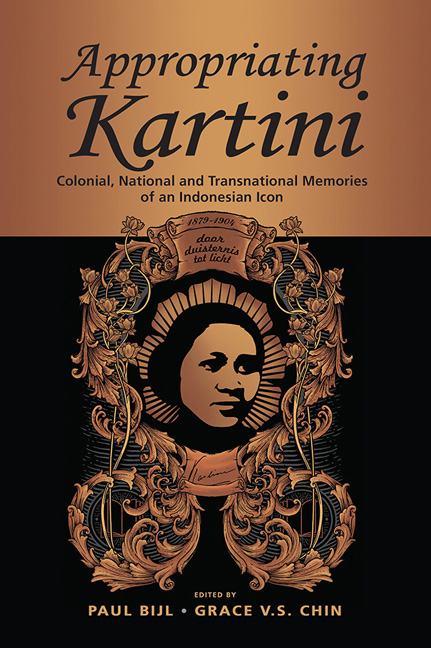Book contents
- Frontmatter
- Contents
- Acknowledgments
- The Contributors
- 1 Introduction
- 2 Crafting Reform: Kartini and the Imperial Imagination, 1898–1911
- 3 Hierarchies of Humanity: Kartini in America and at UNESCO
- 4 Ambivalent Narration: Kartini’s Silence and the Other Woman
- 5 Unpacking a National Heroine: Two Kartinis and Their People 103
- 6 Call me Kartini? Kartini as a Floating Signifier in Indonesian History
- 7 Kartini and the Politics of European Multiculturalism
- 8 Afterword
- Index
4 - Ambivalent Narration: Kartini’s Silence and the Other Woman
Published online by Cambridge University Press: 02 April 2020
- Frontmatter
- Contents
- Acknowledgments
- The Contributors
- 1 Introduction
- 2 Crafting Reform: Kartini and the Imperial Imagination, 1898–1911
- 3 Hierarchies of Humanity: Kartini in America and at UNESCO
- 4 Ambivalent Narration: Kartini’s Silence and the Other Woman
- 5 Unpacking a National Heroine: Two Kartinis and Their People 103
- 6 Call me Kartini? Kartini as a Floating Signifier in Indonesian History
- 7 Kartini and the Politics of European Multiculturalism
- 8 Afterword
- Index
Summary
Introduction
In studies on Kartini, observations have been made about the ironies and contradictions presented by the liberal, modern and feminist persona in her letters. Goenawan Mohammad for instance points out how Kartini would negotiate on “what to say and what is not to be said” (2005, p. vi) in her letters to Stella Zeehandelaar, noting that while she denounced women's suffering in arranged and polygamous marriages as well as their lack of access to education, she was also remarkably reticent when it came to divulging the truth about her own polygamous family background. Despite their shared passion in gender reforms, Zeehandelaar never knew that Kartini was the daughter of a selir, a secondary wife named Ngasirah. Kartini, who readily identified herself as a member of the priyayi, had omitted the fact that the “mama” she spoke of in relation to “Madura royalty” (Kartini 2005, p. 30; Kartini 2014, p. 75) was in fact her stepmother, Raden Ayu Moerjam, also the consort wife (or padmi) to the bupati of Jepara, Kartini's father. What I find interesting here, however, is not so much Kartini's attempt to hide her polygamous family background from Zeehandelaar, but rather the way in which her pride as a member of the priyayi class comes to the fore. Kartini's silence in fact smacks of complicity that is implicitly class-related. As a member of the privileged class, Kartini—despite her resistance against native patriarchy—had little to say about the lower-class women who occupied the ideological and material fringes of her world, including the selir and peasant women (Gouda 1995; Hawkins 2007).1 As Manderson states, Kartini's “contrary portrait of women imprisoned, literally and metaphorically, seems peculiarly bound by class and region” (1983, p. 2).
This Chapter examines how Kartini's silence about the Other woman— represented by the selir and female peasant in Kartini's own lifetime, and the lower-class women in the postcolonial context—problematizes the popular narrative of her feminist progressiveness in Indonesian history. Of significance here is the manner in which Kartini's class consciousness has been maintained and reproduced by entrenched attitudes and viewpoints towards women who occupy the bottom rung of the social ladder in post-independence Indonesia.
- Type
- Chapter
- Information
- Appropriating KartiniColonial, National and Transnational Memories of an Indonesian Icon, pp. 73 - 102Publisher: ISEAS–Yusof Ishak InstitutePrint publication year: 2020

